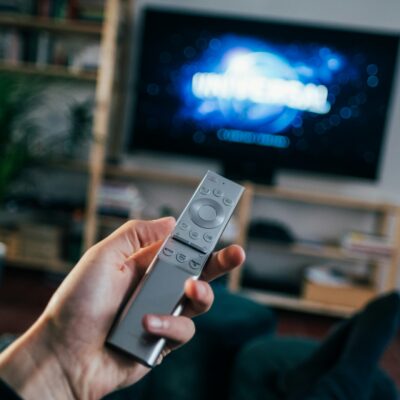
In our previous article, we explored how the Copyright Act, prior to its 2019 amendment, addressed copyright infringement facilitated by TV boxes and the individuals behind the promotion of pirated audiovisual content. As technology has rapidly advanced, however, the techniques employed in TV boxes and the methods used by their purveyors to infringe copyright have grown increasingly diverse. With the active encouragement and facilitation of TV box manufacturers and sellers, a large number of consumers are now able to easily access pirated content through TV boxes. Meanwhile, the TV box industry continues to exploit ambiguities and gaps in the law, persistently challenging the Copyright Act’s protection of copyright holders.
To combat emerging forms of digital infringement in the TV box industry, the Copyright Act was amended in 2019 to include a “TV Box Clause” aimed at safeguarding the legitimate rights of authors and fostering the healthy development of the audiovisual and related industries. In this article, we will delve into the legislative background of the 2019 amendment, the provisions introduced in the new TV Box Clause, practical developments following the amendment, and our thoughts on potential future trends.
I. Challenges Faced in Protecting Authors Under the Pre-2019 Provisions
Emerging patterns of digital infringement have presented significant challenges, particularly because some unscrupulous TV box purveyors do not directly engage in reproducing or publicly transmitting others’ works. Instead, they aggregate applications and links that lead users to external illegal audiovisual websites and embed them into TV boxes or provide them to consumers by other means. By offering consumers easy access to a vast array of pirated content, TV box purveyors attract buyers with the promise of free viewing while profiting from their involvement. By operating in this way, they undoubtedly stimulate the proliferation of piracy.
However, the parties directly infringing copyright through reproduction and public transmission are not the TV box manufacturers or sellers themselves but the unidentified operators of the illegal audiovisual websites. Furthermore, the applications and TV boxes provided by the TV box enterprises do not necessarily employ P2P or other similar technologies. In practice, the courts generally have not held the TV box purveyors to be engaging in public transmission when they merely provide hyperlinks to consumers, instead finding that the actual provision or transmission of the content is performed by those who uploaded the pirated materials to external platforms. These regulatory gaps made it difficult to rely on the existing pre-2019 provisions on reproduction rights, public transmission rights, and the P2P clause to effectively regulate the activities of the TV box enterprises and exacerbated the challenges in tackling such infringements.
There have been some cases, such as the case in Taiwan New Taipei District Court Criminal Judgment No. 112-Zhi-Su-3, in which the courts have held TV box manufacturers or sellers liable when it could be proven that they shared joint intent with the operators of illegal audiovisual websites, collaborated in infringing activities, or provided assistance during the infringement process. Under such circumstances, the manufacturers or sellers may be deemed co-offenders or accessories. However, in judicial practice, attributing legal responsibility to TV box manufacturers or sellers has often proved challenging. The difficulty arises not only from the fact that the sources of illegal audiovisual content are frequently located overseas but also from the inherent challenges in gathering sufficient evidence. As a result, successfully establishing the liability of these entities has invariably been an arduous task.
II. Introduction of the TV Box Clause in May 2019
To address the aforementioned challenges, the Copyright Act was amended in May 2019 to add Article 87(1)(8) (commonly referred to as the “TV Box Clause”), which explicitly establishes the legal liability of computer program providers. This clause targets individuals who, knowing that works broadcast or publicly transmitted by another person infringe economic rights, and with the intent to provide the public access to such works via the internet, act to provide computer programs (such as apps linking to illegal audiovisual content) that aggregate the URLs of such works, and receive benefit therefrom. These actions are expressly deemed acts of copyright infringement under the new clause.
The TV Box Clause not only regulates the act of providing such programs but also extends to those who “direct, assist, or preset paths for the public to use such computer programs,” as well as those who “manufacture, import, or sell equipment or devices preloaded with such computer programs.” The legislative comments on the clause expressly state that, in cases involving TV boxes, any instance in which the boxes are embedded with, or preset with links to, or users are directed to install, computer programs capable of accessing illegal audiovisual content falls within the scope of the clause. By prohibiting any actions that would provide such computer programs, the amendment seeks to bring TV box enterprises that embed illegal applications or induce or assist consumers in accessing illegal audiovisual content, and profit therefrom, under legal control and curb their infringing activities.
III. Observations on Practical Developments Under the TV Box Clause to Date
Having discussed the legislative background and regulatory content of the 2019 amendment, we will now examine judgments handed down by the Intellectual Property and Commercial Court (“IP Court”) following the enactment of the TV Box Clause. This analysis aims to identify the criteria used in evaluating various types of conduct and explore the status of application of Article 87(1)(8) of the Copyright Act in judicial practice today.
Although cases in which the TV Box Clause has been applied are still limited in number, we can already see in the few existing judgments in such cases some clear examples of behaviors that the courts have classified as “embedding computer programs” and “directing the use of computer programs.” First, regarding “embedding computer programs,” actions such as directly installing illegal applications into TV boxes during manufacturing or prior to sale are unequivocally considered embedding. For example, in the appellate case decided in IP Court Civil Judgement No. 111-Min-Zhu-Shang-19, the BOS QBTV TV Box sold by the parties who were the defendants in the lower court trial included an application icon for the BOSTV APP. Consumers could connect to the internet and click on an icon that would automatically link to and download the unauthorized application. The IP Court held this to be a form of embedding behavior. Conversely, if a TV box does not come pre-installed with any such applications and consumers independently search for and choose to download them, the manufacturer or seller will not be considered to have engaged in embedding behavior.
However, just because the manufacturer or seller has not embedded any illegal application in a TV box does not necessarily mean they can escape the application of the TV Box Clause. They may still be held to have infringed copyright if they have directed or assisted in the downloading of illegal applications. Textbook examples would include a seller giving a consumer who is buying a TV box directions on how to download an illegal application, either on-site or through communications software or customer service representatives, or a seller posting tutorials on how to download illegal applications on audiovisual platforms, social media pages, or shopping websites.
It is worth noting that while the new Copyright Act provisions have brought greater protections, they also seem to have stimulated the emergence of some even more indirect infringement patterns. For example, in the case addressed in IP Court Civil Judgment No. 110-Min-Zhu-Su-114, the defendants imported the EVBOX TV box into Taiwan for sale. After purchase, consumers could contact customer service by scanning a link on the TV box and be provided with a download link for a “Global TV Super Edition” application along with directions on how to install it. Once downloaded, consumers could use the application to access a huge amount of unlicensed audiovisual content. In the trial of first instance, the IP Court determined that the TV box did not come embedded with any illegal applications and the defendants did not engage in public transmission. As evidence showed that the customer service representative who provided the directions was a third party and there was no proof of a connection with the defendants, the court held that the defendants had not engaged in direction and therefore did not infringe copyright. However, on appeal, the IP Court came to the view that, while the TV box itself did not have illegal applications pre-installed, it could indeed be installed with illegal computer programs under the direction of a third party, enabling the public to access works infringing others’ economic rights. The IP Court thus found in its appellate Judgment No. 112-Min-Zhu-Shang-17 that the appellees (the defendants in the first-instance trial) not only tacitly condoned this infringement but also used advertising to imply that the TV box had “jailbreaking” capabilities, which were realized through a third party. Consequently, the IP Court ultimately held that the appellees, knowing that others were publicly transmitting works infringing economic rights, had provided direction and assistance in enabling the public to use a computer program that aggregated the URLs of works infringing others’ copyrights, constituting an infringement under Article 87(1)(8)(2) of the Copyright Act. This case illustrates that judicial understanding of what constitutes “direction” is still developing, and some operators are circumventing existing regulations through complex processes, making determinations more challenging.
What is more, TV boxes touted as “Pure Version” boxes have now emerged. On the surface, these boxes do not come pre-installed with any illegal applications. However, they still leave open the possibility of accessing illegal applications. With just a simple internet search or information shared through online communities, users can easily download and view pirated audiovisual content, thus bypassing the restrictions imposed by the Copyright Act’s TV Box Clause. Meanwhile, many “enthusiastic netizens” share tutorials on the internet for installing or using infringing applications, which might also be deemed as “direction” for installing infringing computer programs, raising new infringement concerns and issues.
In short, when determining infringement behavior with respect to TV boxes in the cases seen so far, the courts have generally followed the intent described in the legislative comments, carefully examining whether any embedded software, preset links, or acts of direction are present in a given case. However, as there have not yet been a large number of applicable cases, many of the determination criteria still need to be further developed through practical case accumulation. In particular, the criteria for determining what constitutes certain elements of infringement (such as preset program links) under the TV Box Clause await fuller clarification by the courts in future cases. Although we are seeing some promising outcomes from the new clause, we are also seeing the emergence of increasingly indirect forms of potential infringement. It will be important to closely monitor how the regulatory authorities and courts address these issues in the future.
IV. Conclusion
With the addition of the new TV Box Clause, the Copyright Act has provided more comprehensive protection for authors of audiovisual works. It is also foreseeable, however, that infringement behaviors may become increasingly complex and difficult to prevent as time goes on. As technology continues to evolve, regulatory gaps may emerge once again. We suggest that to further strengthen protection for authors, attention could be focused on the following areas for future development: expanding protection through the courts’ refinement of judgment criteria for various infringing behaviors; introducing mechanisms to block illegal audiovisual content at the source; and continuing to amend the Act in the future to adapt to evolving infringement patterns. It is hoped that the Copyright Act will keep pace with emerging infringing techniques and that timely new countermeasures will continue to be developed to ensure comprehensive protection for rights holders.
For more information on copyright and IP protection and enforcement matters in Taiwan, please contact us at gkuo@winklerpartners.com or ychen@winklerpartners.com.
Written on 29 April 2025 by Gary Kuo, Yi-kai Chen and Ying-Chu Shih.

